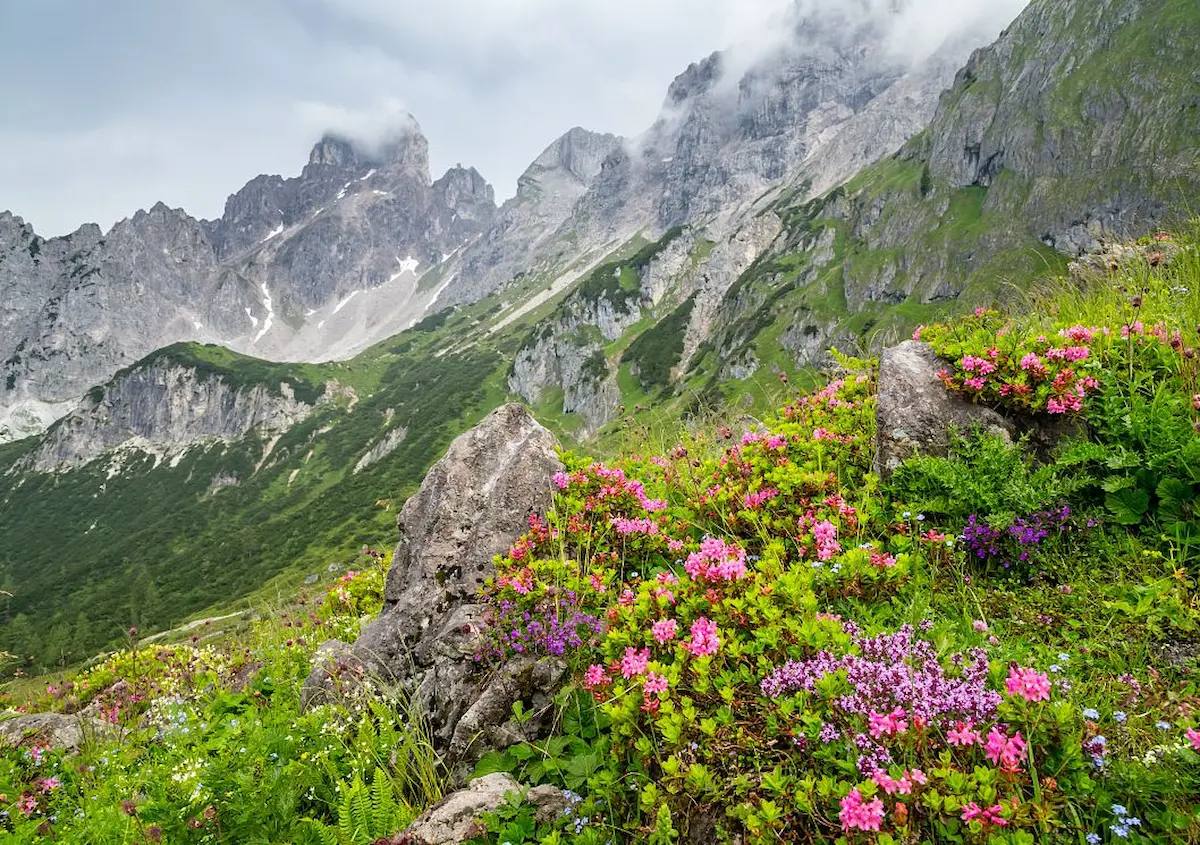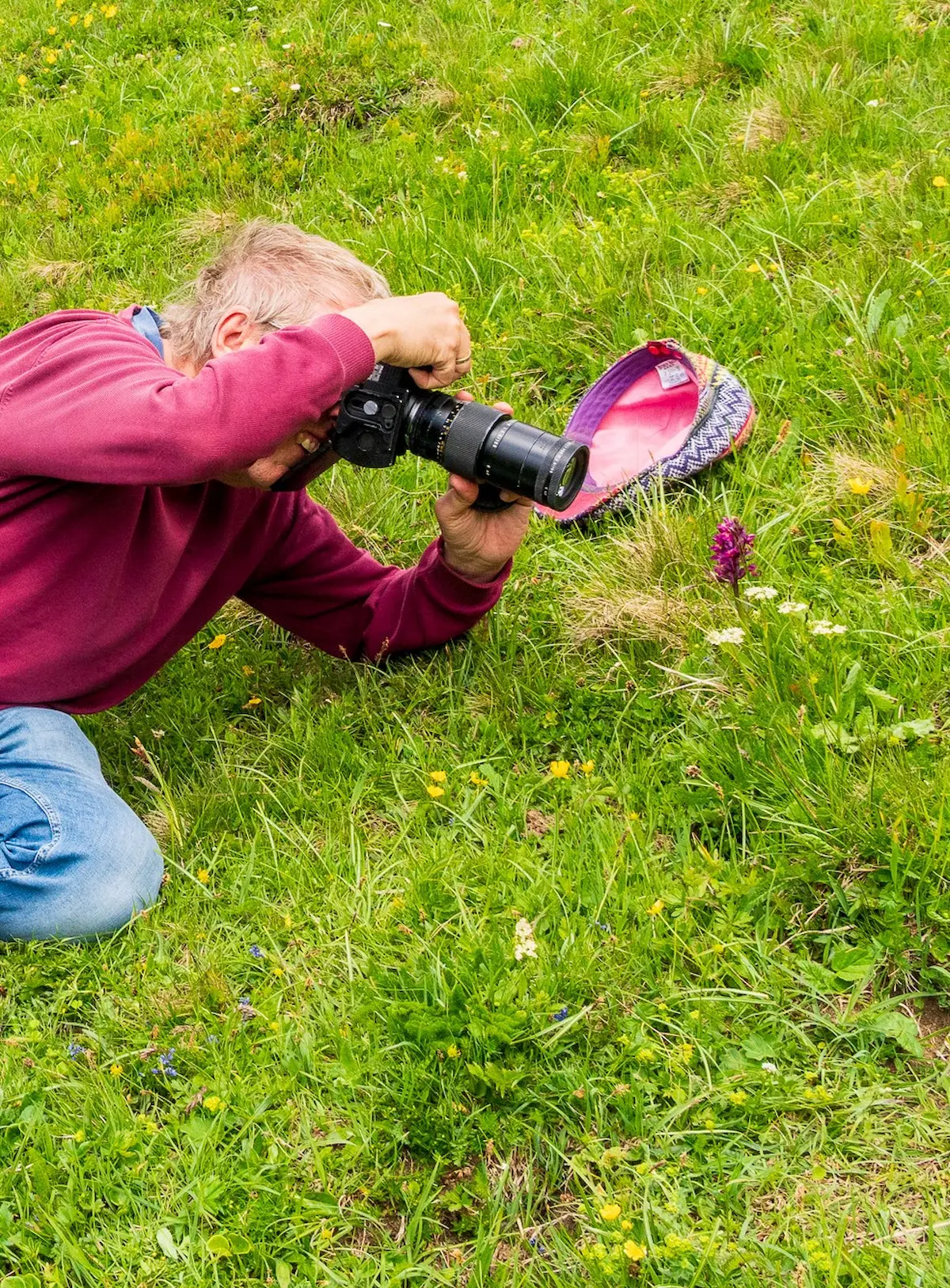From 16 May to 21 July, the Salzburg hiking village of Filzmoos invites you to gain an insight into the fascinating world of orchids on guided excursions. Under the claim ‘Orchids and Cabbage Orchids’, Filzmoos Tourismus is offering three nights' accommodation with breakfast, a guided orchid walk and small additional gifts.
The orchid is considered the queen of flowers. There are 25 different species growing in the Filzmoos area alone, including various species of orchid and cabbage orchid that give the area its name.

Orchids - wonders of nature
When most people think of orchids, the first thing that comes to mind is the magnificent flowering plants from tropical regions, such as those sold in garden centres. However, if you go exploring in natural forests, dry grasslands and wet meadows in spring and summer, you will also discover some beauties of this special species in Europe.
Orchids are among the most colourful phenomena in the plant kingdom. They take their name (orchis) from the shape of the paired root nodes of the orchids, which resemble testicles. The genus name has been adopted to designate the whole family. They grow on stones, the ground or other plants, but they do not feed on themThe tiny but numerous seeds of many orchids have no ‘germinal flesh’, they are dependent on an external food supply and thus often form symbioses with fungi, from which they obtain water and minerals. This dependence can be temporary and end when the seedlings are able to produce chlorophyll themselves, but in many species it can also be ‘lifelong’.
Orchids are usually pollination specialists that are dependent on a specific species or genus of insect, but also birds or amphibians. Many species use a kind of box of tricks by attracting insects that are ready to mate either visually or olfactorily by imitating sexual odours and then sending them on their way again, laden with pollen. For this purpose, the plants form tubes, tunnels or sacs where the ‘visitors’ are ‘coated and stuck’ with pollen. There is also an even more ‘sneaky’ strategy in which the flowers emit alarm substances typical of the species, which then attract the predators of the alleged attackers or even the victims of the flower itself and do the pollination job. Self-pollination by the plant itself also occurs.
Orchids are not only some of the most colourful and aromatic plants, they are also found all over the world. Even the most hardened nature lovers often pass them by unsuspectingly, but not those who have taken part in an orchid walk in Filzmoos.

Wanderdorf Filzmoos
The municipality of Filzmoos in Pongau, a member of the Austrian Hiking Villages Network, lies on a high plateau at an altitude of just over 1,000 metres. To the north of the municipality rise the Dachstein and the Gosaukamm with its dominant peak, the Bischofsmütze, which has also found its way into the municipal coat of arms in stylised form. Drainage ultimately takes place either via the Inn or the Enns into the Black Sea. Filzmoos, or rather the northern part of the area, forms part of the UNESCO World Heritage Site Hallstatt-Dachstein/Salzkammergut. The name is a doubling, both ‘Filz’ and ‘Moos’ denoted and still denote boggy terrain.

Filzmoos officially describes itself as a ‘place of power’, seventeen places of power in the municipality can be hiked to in an organised way. The majestic surroundings, the clear air and the impressive silence are said to have a health-promoting effect and are certainly good places to find peace and come to terms with yourself. Some of these places are associated with legends and supernatural phenomena, quite a few of which live on in this landscape in ancient tradition.
Those who are less inclined to such things can indulge in mountaineering, mountain biking and skiing, both alpine and Nordic. After all, there are plenty of opportunities.


Text: Werner Köstle
Images: Lead image and text image 4 Filzmoos Tourismus, other text images Filzmoos Tourismus/CoenWeesjes

